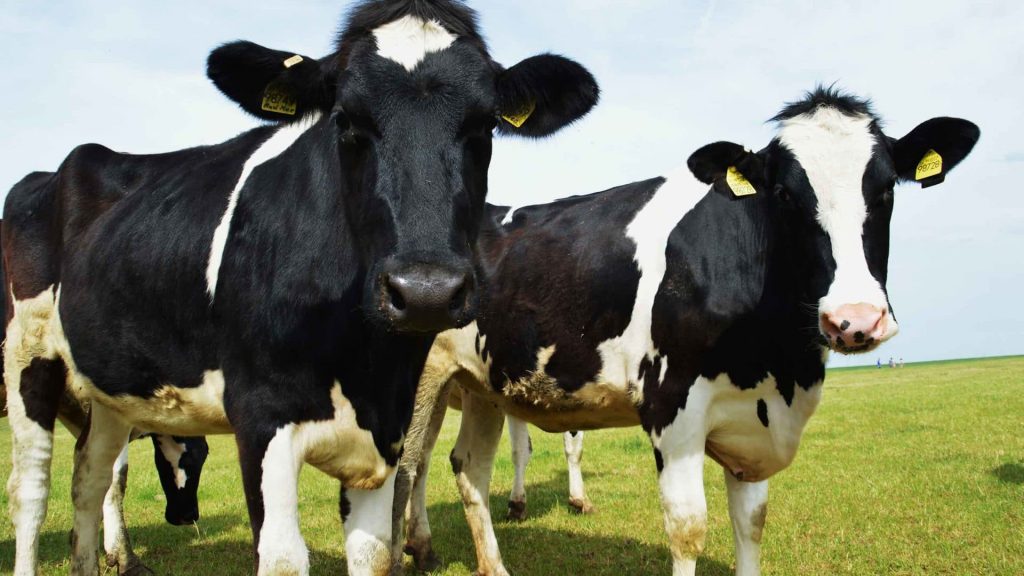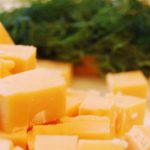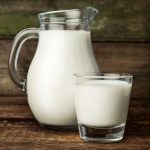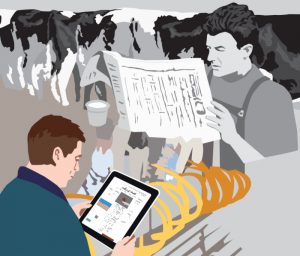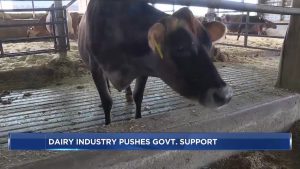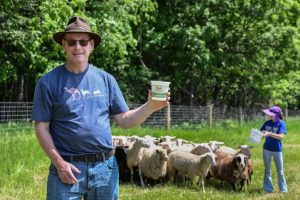
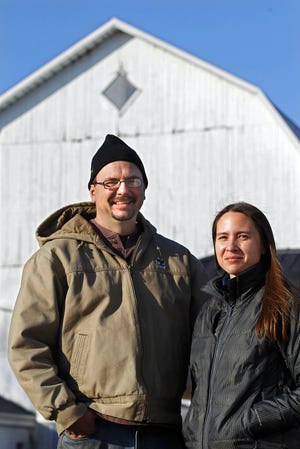
In Waukesha County, once known as Cow County, farm fields have mostly given way to suburbs and storefronts. Still, John Koepke is there farming, as his family has been since 1875.
The land is their legacy, and what it produces matters. Koepke aims to keep it that way. Through a conservation easement with Tall Pines Conservancy, they have ensured their land will never be developed into subdivisions.
Koepke, a fifth-generation dairy farmer, operates Koepke Family Farms with his wife, Kim. They milk 360 cows. That milk goes into their LaBelle cheese, which takes its name from nearby Lac LaBelle. The cheese is made in Milwaukee at Clock Shadow Creamery.
Koepke talks about why he continues the family farming tradition, and why he stays in Waukesha County.
Question: Your family has farmed in Wisconsin since the 1800s. Were they always dairy farmers?
Answer: I am a fifth-generation dairy farmer here in Waukesha County. There have always been dairy cattle here.
Q: How did your family get into making cheese?
A: When you look at the dairy industry in the United States, there is a lot of consolidation these days. Dairy herds either tend to get larger or get out of business, unfortunately.
We were looking for ways to capture more margins and capitalize on our position in Oconomowoc. … About 20 years ago we realized our ability to grow our business outwards was going to be challenged by our location. Having been here for five generations, there are a lot of intangibles. It may look good on paper to move, but you would abandon those. Cheese meant building our business upwards instead of outwards.
Q: Did you ever want to do anything else?
I did go away to college. I’m a graduate of Cornell University in New York state. That’s where I met my wife. That gave me an opportunity to be away and be exposed to different things. Ultimately I enjoy being here.
Q: What do you want people to know about dairy and Wisconsin? What do people misunderstand?
A: One would be that farms are bad for the environment. There are some bad actors, but there are a lot of good ones, too. You don’t live in the same place for five generations if you don’t have an interest in taking care of your land interest, your water interest. You get taught by grandma and grandpa from a young age that you leave things better than you found them …
If I can make a living here from the resources we have and leave as little mark as possible, that would be my greatest achievement.
Q: How much of the milk produced goes to your cheese production?
A: A really tiny portion goes to our cheese production, probably less than 5%. We’d love to have it more than that, but here’s the deal. The farm is managed by my wife, myself, and key employees. We have three kids. We want the value added (cheese), but we won’t go any faster than it is fun. Rather than trying to kill ourselves selling millions of dollars of cheese, we’re happy to make good cheese.
Q: How many styles of cheese are you creating?
A: Our signature is LaBelle, and that comes in a number of different flavors. We have original, smoked, smoked with bacon, fenugreek, black pepper and green olives. Then last spring we dabbled in making cheddar. That is mostly in our cooler right now and available on our website.
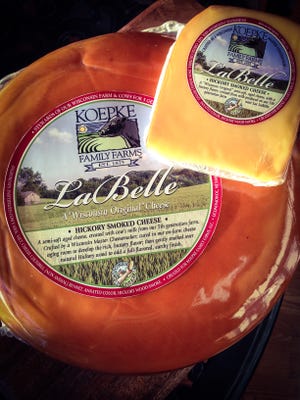
Q: What prompted you to add cheddar during a pandemic?
A: Last spring there was a lot of milk being dumped. Well, we can either run this down the drain or take a chance and make more cheese. Our cheesemaker was limited on how much LaBelle they could make at a crack, but they had bigger vats for cheddar. We call it “Taking a Chance Cheddar.” It is getting better as it ages and should debut in stores later this summer.
Q: Do you have a favorite of the cheeses made with your milk?
A: My personal favorite is our smoked original, I like that one a lot. The smoked with bacon makes a killer grilled cheese.
Q: You created your own variation of a cheese cave on-site?
A: We knew when we started this we’d need some kind of aging facility. Being that our cheese is custom made for us, we don’t have a tremendous investment in bricks and mortar. We don’t have a cheese factory. That’s what Clock Shadow does for us.
We purchased an insulated container that was ready to go to salvage. We fixed it up and installed refrigeration equipment, lined it with stainless steel, lighting. It looks like a fancy warehouse from the inside. On the outside it looks like something that would look at home on the back of a train.
Q: What reminds you most of the family history?
A: The original barn was built in 1922. My grandfather spent a good portion of his life in there. We like cattle, they’re special, but there’s not one particular cow. The fact that there are cattle here is important though. The biggest connection I have to my parents, grandparents and great-grandparents is the land. We do own the original homestead where my great-great-grandfather settled in in 1875.
A lifetime ago Waukesha County was called “Cow County USA” and was home to 60,000 dairy cows, the home of every major dairy breed show champion at one point in the 1920s. Now we have 380,000 people and maybe 2,000 dairy cows, and those are on the fringes of the county. It has been a complete transformation.
As a family, we placed a conservation easement on the property, it abuts the city of Oconomowoc. We wanted it to be open space and farmland. Our ancestors wanted it to stay in agriculture. A conservation easement means it won’t ever be a subdivision or parking lot …
We live on the farm. My wife and I live three-quarters of a mile from the main dairy herd, in a house my grandparents purchased in 1957. Our little road we live on is the last road in Waukesha County that does not have any residential development. It is neat to share it with the bicycle riders and dog walkers that find their way out here.
Table Chat features interviews with Wisconsinites, or Wisconsin natives, who work in restaurants or support the restaurant industry; or visiting chefs. To suggest individuals to profile, email psullivan@gannett.com.
